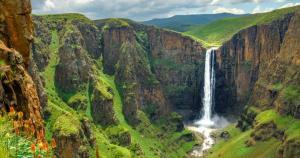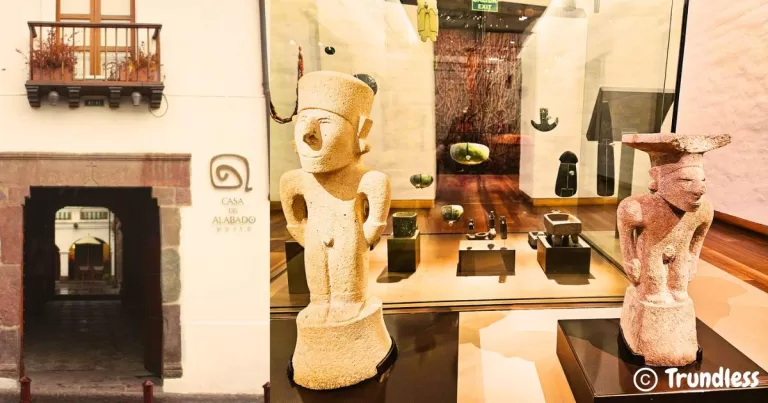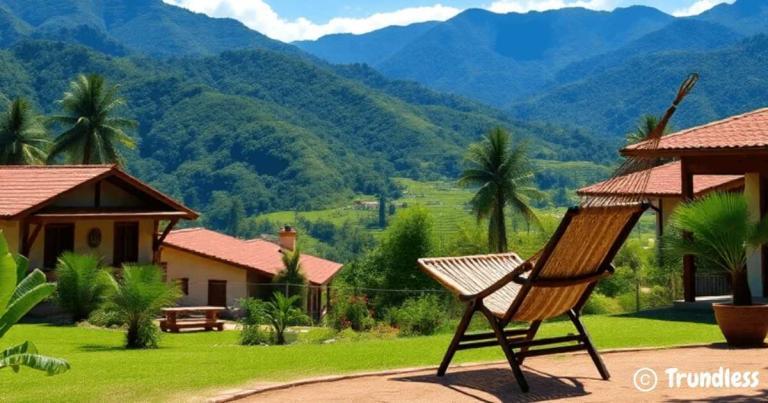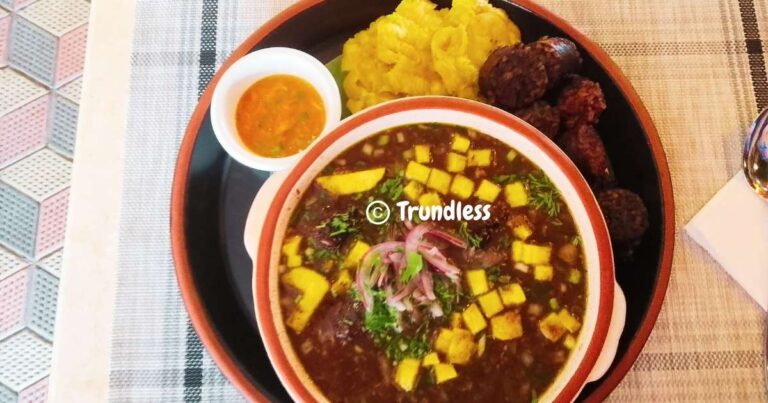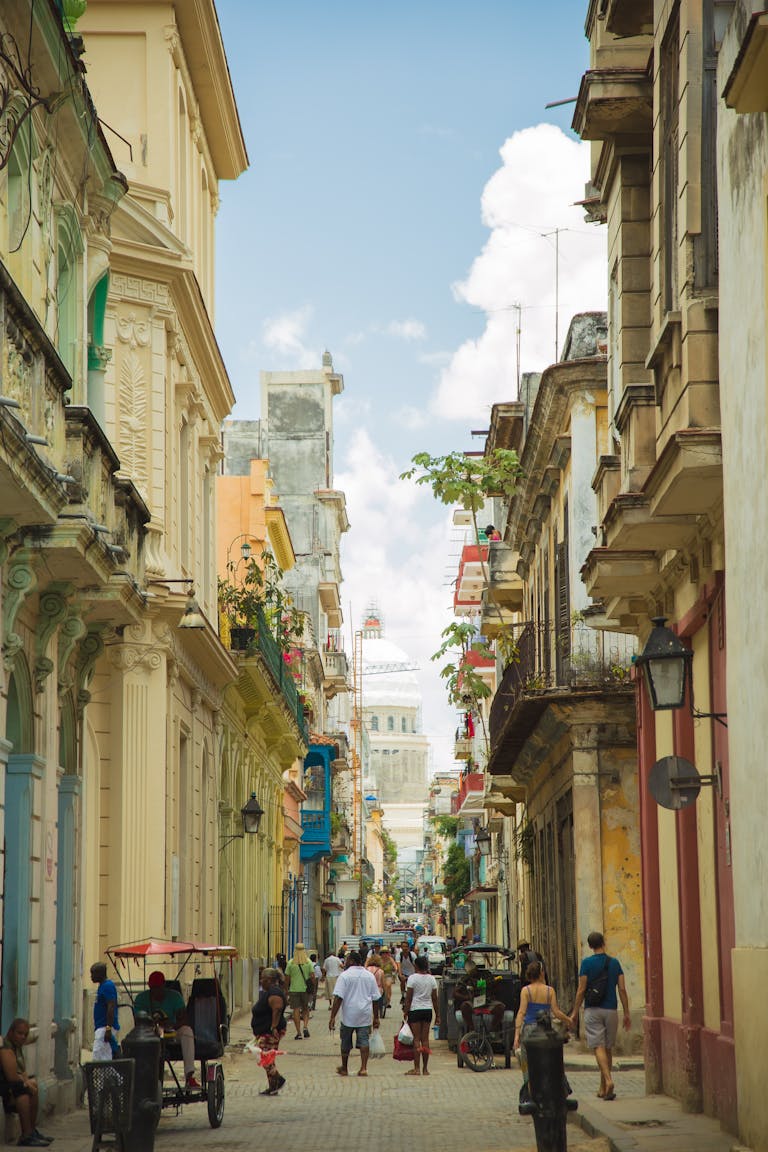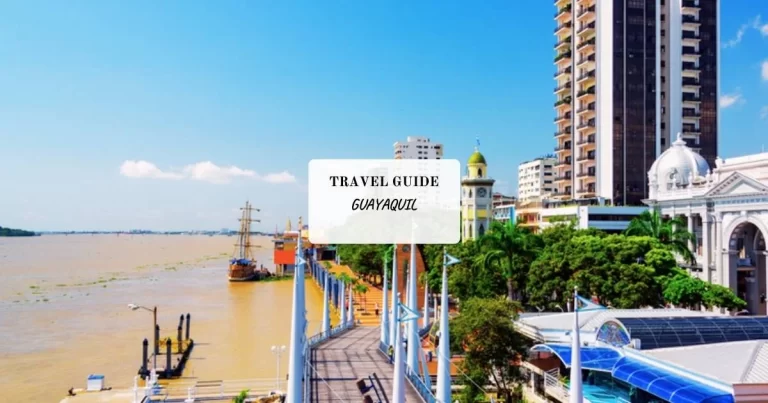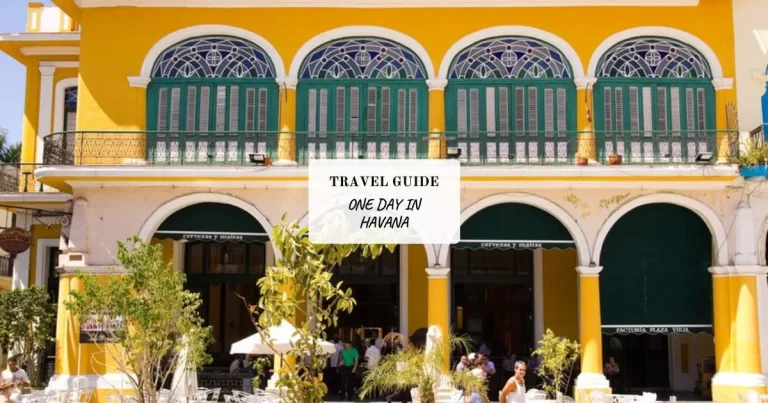Is Peru Safe? Essential Travel Tips and Safety Advice
When planning a trip to Peru, one of the most crucial aspects to consider is safety. Understanding whether Peru is safe for travelers is essential for ensuring a pleasant and worry-free experience. The country’s rich history, vibrant culture, and breathtaking landscapes make it a popular destination, but it’s important to be aware of the current safety situation.
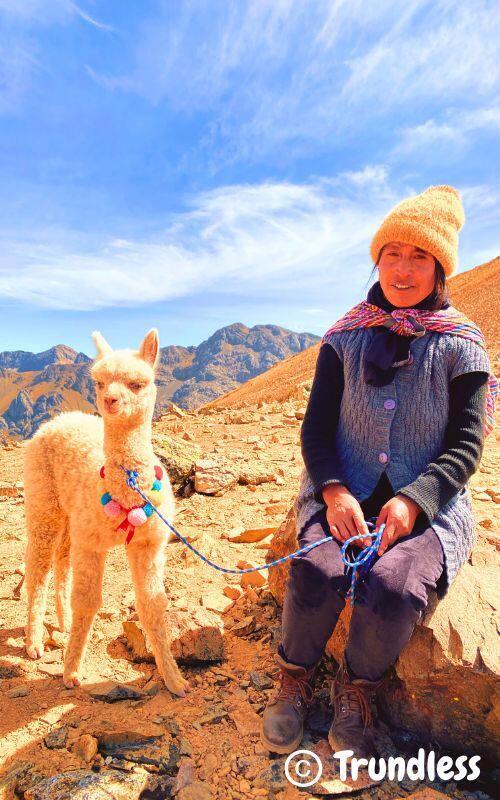
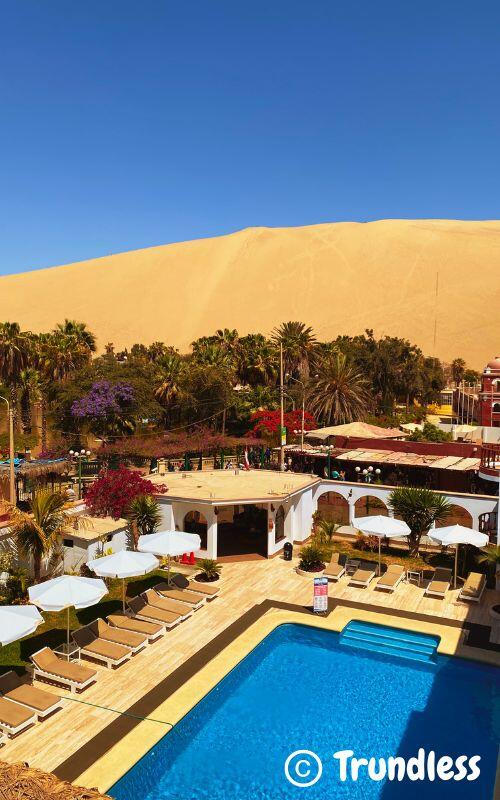
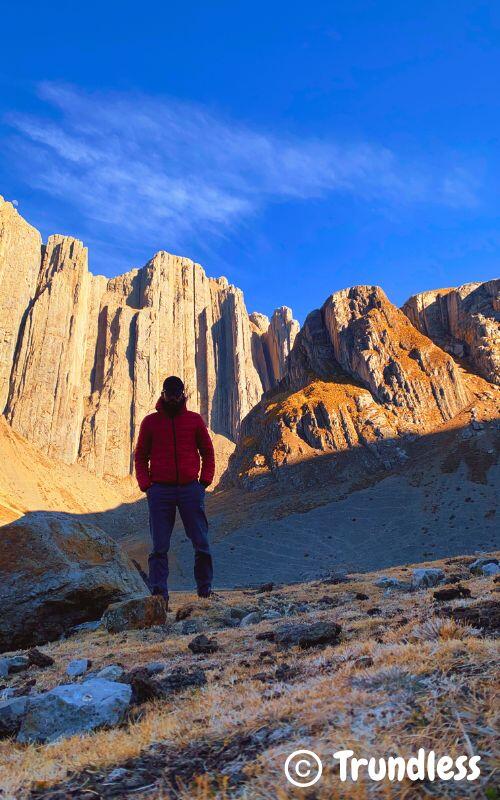
In this article, we will provide an in-depth overview of travel safety in Peru. This includes potential risks you might encounter and the measures you can take to ensure a secure trip. By staying informed, you can enjoy everything Peru has to offer while minimizing any potential dangers.
The U.S. State Department plays a significant role in providing guidance to American citizens traveling abroad. Their travel advisory for Peru highlights areas where increased caution is necessary due to crime and civil unrest. This information helps travelers make informed decisions about where and when to travel within the country.
We aim to equip you with practical information and personal experiences that highlight both the pros and cons of visiting Peru. From understanding regional safety variations to specific threats like express kidnappings and ATM safety, you’ll find actionable advice to help you stay safe during your travels.
Understanding the Current Safety Situation in Peru
Overview of Crime Rates and Civil Unrest in Peru
Peru has a complex safety situation, with crime rates and civil unrest varying significantly across different regions. Major cities like Lima, Cusco, and Arequipa experience higher instances of street crime such as muggings, thefts, and robberies. According to the U.S. State Department, it’s important for travelers to be extra cautious due to these common problems.
Crime Rates in Major Cities
Here are some key details about crime rates in major cities:
- Lima: As the capital city, Lima is a busy metropolis with a significant amount of criminal activity. Tourists are often targeted in crowded areas like markets, public transportation hubs, and popular tourist attractions.
- Cusco: Known as the starting point for Machu Picchu trips, Cusco also has issues with petty theft and scams targeting tourists.
- Arequipa: While relatively safer compared to Lima and Cusco, Arequipa still reports incidents of street crime, especially in less crowded areas.
Security Challenges in Rural Areas
It’s not just cities that have risks. Rural areas also have their own security challenges. The Valley of the Apurímac, Ene, and Mantaro Rivers (VRAEM) region is known for its high levels of drug trafficking and associated violence.
Civil Unrest and Political Instability
Another important factor affecting safety in Peru is civil unrest. Political instability can lead to protests and demonstrations that sometimes become violent. Recent incidents have shown this problem:
- 2020 Protests: There were widespread protests against the interim government after President Martín Vizcarra was impeached. These protests involved clashes between demonstrators and security forces.
- 2021 Elections: The presidential elections led to increased tensions with allegations of electoral fraud resulting in mass protests.
Travelers should be cautious of large gatherings or demonstrations as they can quickly become dangerous. It’s advisable to follow local news sources for updates on the situation.
Regional Safety Variations in Peru
While Peru has its safety challenges, certain regions are generally considered safer for tourists:
- Lima (Miraflores and San Isidro): These districts are known for being more secure due to higher police presence and better infrastructure.
- Cusco (Historic Center): The historic center is heavily patrolled by police given its importance as a tourist hub.
- Arequipa (Yanahuara District): This area is known for its tranquillity and lower crime rates compared to other parts of the city.
On the other hand, there are some regions that require extra caution or should be avoided altogether:
- Colombian-Peruvian Border: This area is plagued by illegal activities such as drug trafficking and armed conflicts.
- VRAEM Region: Known for high levels of violence related to narcotics operations.
Being aware of these variations helps travelers make informed decisions about their itineraries. Prioritizing visits to safer zones while avoiding high-risk areas can significantly enhance your travel experience in Peru.
Regional Safety Variations in Peru
Understanding the safety landscape of Peru is crucial before planning a trip. The country presents a mix of relatively safe regions and high-risk areas, each with unique security considerations.
Safe Regions in Peru
Specific regions within Peru are considered relatively safe for tourists, provided they follow standard precautions. These areas include:
Lima
- General Safety: As the capital city, Lima is a popular destination for tourists. While it has its share of crime, particularly in certain neighborhoods, many districts are deemed safe.
- Recommended Districts: Miraflores, Barranco, and San Isidro are known for their safety and tourist-friendly environments. These areas have increased police presence and better infrastructure.
- Security Measures: Stick to well-lit streets and avoid displaying valuables. Use reliable transportation options such as registered taxis or ride-sharing services.
- Unique Considerations: Be cautious in crowded places like markets or public transport stations where pickpocketing can occur.
Cusco
- General Safety: Cusco, the gateway to Machu Picchu, attracts numerous tourists annually. The city center is generally safe but remain vigilant in less frequented areas.
- Tourist Zones: The historic center around Plaza de Armas is heavily patrolled and considered secure. Sacred Valley tours are also generally safe with reputable operators.
- Security Measures: Avoid walking alone at night and stick to well-known streets. Keep an eye on your belongings in crowded spots.
- Unique Considerations: Altitude sickness can be a concern; ensure you’re adequately prepared for high altitudes.
Arequipa
Unique Considerations: Pay attention to local advice about volcanic activity from El Misti Volcano.
General Safety: Arequipa is known for its colonial architecture and has a lower crime rate compared to Lima and Cusco. It’s often regarded as one of the safer cities for tourists.
Safe Areas: The historic center and Yanahuara district are popular among visitors and considered safe.
Security Measures: Basic precautions such as avoiding poorly lit areas at night still apply.
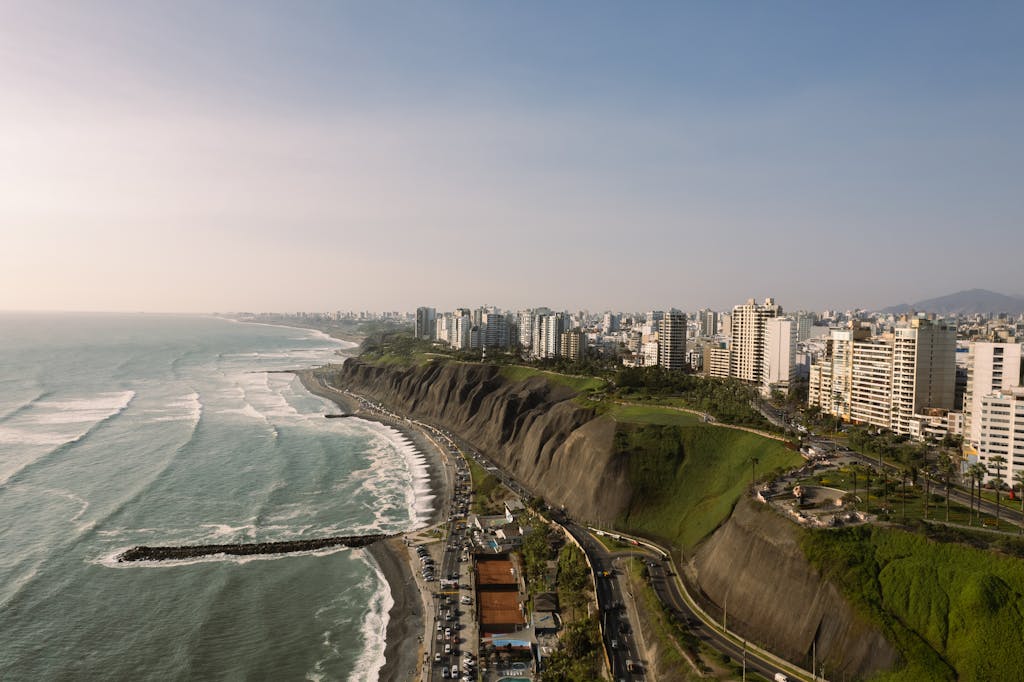
High-Risk Areas in Peru
Certain regions pose significant risks and should be approached with heightened caution or avoided altogether.
Colombian-Peruvian Border
- Risks: This area is marked by high levels of criminal activity including drug trafficking, smuggling, and armed clashes between law enforcement and criminal groups.
- Travel Warnings: The U.S. State Department advises against all but essential travel to this region due to the potential for violence.
VRAEM Region (Valley of the Apurímac, Ene, and Mantaro Rivers)
- Risks: Known for being a hotspot for narco-terrorism activities linked to remnants of Shining Path insurgents.
- Travel Warnings: Classified as Level 4 – Do Not Travel by the U.S. State Department due to dangers like kidnappings, carjackings, assaults, especially at night.
Being aware of these regional variations can help you make informed decisions when planning your travels in Peru. Some areas offer rich cultural experiences with proper precautions while others may require more stringent safety measures or even avoidance altogether.
Crime Prevention and Personal Safety Tips for Travelers in Peru
Street crime in Peru is a significant concern, especially in bustling urban areas like Lima, Cusco, and Arequipa. While it’s impossible to eliminate all risks, there are several proactive steps you can take to enhance your safety:
Practical Tips for Staying Safe
- Keep Belongings Secure:
- Use anti-theft backpacks or money belts.
- Avoid displaying expensive items such as jewelry, high-end electronics, or large amounts of cash.
- Use Reliable Transportation:
- Opt for registered taxis or ride-sharing services like Uber.
- Pre-arrange airport transfers through reputable companies.
- Be Aware of Common Scams:
- Beware of “friendly” locals offering unsolicited help or tours.
- Avoid street vendors selling counterfeit goods or overpriced items.
- Maintain Situational Awareness:
- Stay alert in crowded places like markets and public transport hubs.
- Avoid using your phone while walking through busy streets to reduce distraction.
- Avoid Isolated or Poorly Lit Areas:
- Stick to well-lit streets and avoid shortcuts through alleys.
- Walk in groups when possible, especially at night.
- Keep Important Documents Safe:
- Carry photocopies of your passport and leave the original in your hotel safe.
- Use RFID-blocking wallets to protect against digital theft.
Additional Precautions
- Monitor Local News: Stay updated on local news for any reports of civil unrest or unsafe areas.
- Emergency Contacts: Have a list of emergency contacts, including local authorities and your country’s embassy.
- Health and Travel Insurance: Ensure you have comprehensive insurance that covers medical emergencies and theft.
By following these personal safety tips, you can significantly reduce the risk of falling victim to street crime in Peru. Staying vigilant and making informed decisions are key to enjoying a secure travel experience.
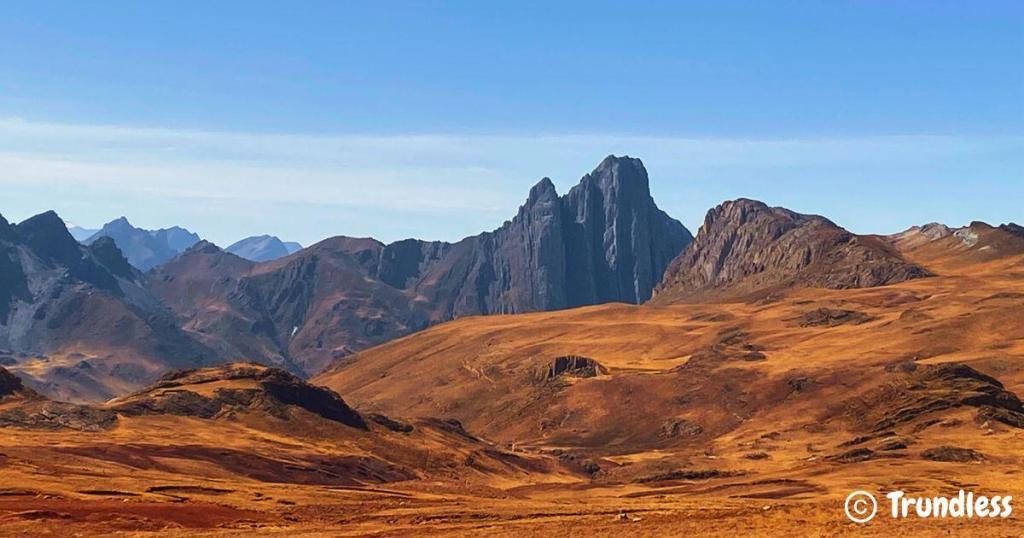
Dealing with Specific Threats: Express Kidnappings, ATM Safety, and Political Protests in Peru
The Risk of Express Kidnappings in Peru
Express kidnappings are a particular concern for travelers in Peru. This type of crime involves abducting an individual for a short period to extract the maximum amount of money possible through ATM withdrawals or quick ransom payments.
How Express Kidnappings Typically Occur:
- Target Selection: Victims are often selected based on perceived wealth. Tourists displaying expensive jewelry, electronics, or large amounts of cash can become targets.
- Abduction: The abduction can occur in various settings, including at ATMs, while using public transportation, or even when hailing a taxi on the street.
- Financial Exploitation: Once abducted, the victim is taken to multiple ATMs to withdraw cash. In some cases, the kidnappers may demand additional ransom from family members or friends.
Tips to Minimize Risk:
- Use Reputable Transportation Services:Opt for registered taxi services such as those arranged by hotels or ride-sharing apps like Uber. Avoid hailing taxis directly off the street.
- Avoid Displaying Signs of Wealth:Keep valuables such as jewelry, high-end electronics, and large sums of cash out of sight.
- Utilize money belts or hidden pouches to store essential documents and money.
- Stay Vigilant at ATMs:Use ATMs located in secure areas like banks or malls rather than those on the street.
- Be aware of your surroundings and avoid making withdrawals at night.
- Travel in Groups:Whenever possible, travel with companions especially when navigating unfamiliar areas.
- Have an Emergency Plan:Inform someone you trust about your daily itinerary.
- Establish a check-in routine to alert others if something goes wrong.
Ensuring Secure Transactions: ATM and Credit Card Safety in Peru
ATM fraud is another threat that tourists need to be vigilant about. Skimming devices and thefts at ATMs are not uncommon.
Tips for ATM Safety:
- Inspect the ATM:Before using an ATM, look for any unusual devices attached to the card slot or keypad area which could indicate a skimming device.
- Cover Your PIN:Shield your PIN entry with your hand to prevent hidden cameras from capturing it.
- Choose Safe Locations:Prefer using ATMs inside bank branches or well-lit areas where security personnel are present.
- Monitor Your Accounts:Regularly check your bank statements for unauthorized transactions and report them immediately.
- Limit Cash Withdrawals:Withdraw only what you need and avoid carrying large amounts of cash.
Handling Political Protests in Peru
Political protests can rapidly escalate into violent confrontations posing risks to personal safety and disrupting travel plans.
Staying Safe During Protests:
- Stay Informed:Monitor local news and government advisories for updates on protests and demonstrations.
- Avoid Protest Areas:Steer clear of known protest locations even if you are merely passing through.
- Respect Local Laws:Participating in protests can lead to detention or deportation for foreigners.
- Plan Alternative Routes:Have backup routes and transportation options ready in case roads are blocked due to protests.
- Engage with Locals Cautiously:While seeking information from locals can be helpful, exercise caution when discussing political topics which might provoke tension.
Incorporating these precautions into your travel plans helps ensure a more secure experience while exploring Peru’s rich culture and natural beauty. Remaining aware of these specific threats allows you to navigate potential dangers effectively without compromising on the adventure that awaits you in this fascinating country.
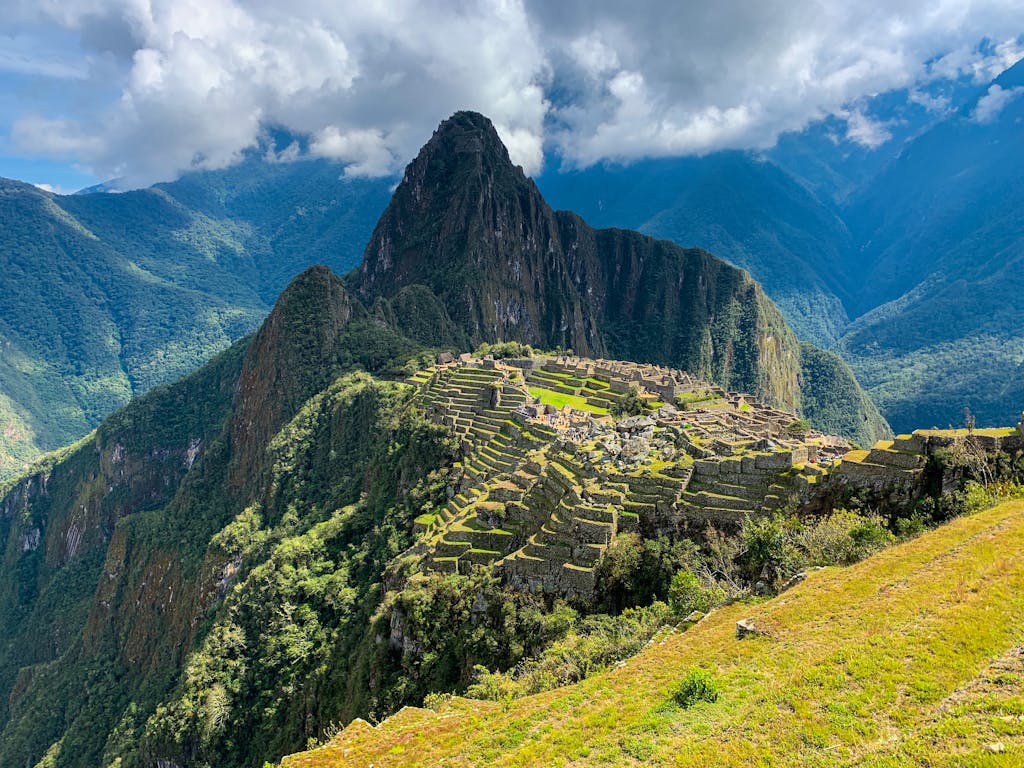
Ensuring Secure Transactions: ATM and Credit Card Safety in Peru
While Peru is generally a safe destination for tourists, certain threats such as ATM fraud and card skimming have been reported in recent years. These issues require heightened attention during your trip to safeguard your financial information.
Potential Dangers of ATM Fraud and Card Skimming
ATM fraud and card skimming are prevalent in popular tourist areas. Criminals often install skimming devices on ATMs to steal card details and PIN numbers. To protect yourself:
- Use ATMs inside banks or well-lit, secured locations: These machines are less likely to be tampered with.
- Inspect the ATM before use: Check for unusual attachments or loose parts around the card slot and keypad.
- Cover the keypad when entering your PIN: Shielding the keypad can prevent hidden cameras from capturing your PIN.
Tips for Using Credit Cards in Peru
Credit card fraud is another concern. When using credit cards:
- Avoid using credit cards at street vendors or small shops: Larger, reputable establishments are generally safer.
- Monitor your account regularly: Report any unauthorized transactions immediately.
- Notify your bank before traveling: Inform them of your travel plans to avoid having your card blocked due to suspicious activity.
Alternative Payment Methods
To reduce reliance on potentially compromised ATMs, consider alternative payment methods:
- Pre-paid travel cards: These offer a secure way to carry funds without exposing your primary bank account.
- Cash withdrawals at bank counters: If you need cash, withdrawing directly from a bank teller can be safer than using an ATM.
Staying vigilant about where and how you access your funds can significantly reduce the risk of falling victim to financial crimes while traveling in Peru.
Navigating Political Demonstrations as a Visitor
Respecting the local political climate is crucial when traveling in Peru. Citizens have the right to engage in peaceful protests, and these events are often expressions of democratic freedoms and local grievances. However, as a foreign visitor, it’s important to approach these situations with heightened caution.
Why Avoid Direct Participation
There are several reasons why it’s best for visitors to avoid getting directly involved in political demonstrations:
- Potential for Violence: Even peaceful protests can quickly escalate into violent confrontations with law enforcement or counter-protesters. The risk of injury or detention increases significantly in such scenarios.
- Unwanted Attention: Foreigners participating in political demonstrations may attract unwelcome attention from both the authorities and locals. This scrutiny can lead to complications such as detainment or even deportation.
Observing Safely
If you come across a protest while you’re traveling, here’s what you can do to ensure your safety:
- Observe from a safe distance rather than joining the crowd.
- Keep an eye on local news and updates from reliable sources, including the U.S. State Department’s travel advisory, to stay informed about potential demonstrations and areas to avoid.
Practical Tips for Staying Safe
Here are some practical measures you can take to minimize your exposure to any risks associated with political demonstrations:
- Stay informed: Regularly check local news outlets and social media for updates on planned protests or civil unrest.
- Avoid hotspots: Steer clear of known protest zones, especially government buildings, main squares, and university campuses where demonstrations are more likely to occur.
- Have a backup plan: Know alternative routes and modes of transportation in case primary paths are blocked by protests.
- Carry identification: Always have your passport or a photocopy on hand in case you need to identify yourself to authorities.
Case Study: Lima Protests
Lima has seen several significant protests in recent years, often related to political changes or social issues. These events typically take place around Plaza San Martín or near government offices. While these areas are central and popular among tourists, they can become hotspots for unrest during protests.
What To Do If Caught In A Demonstration
In the event that you find yourself unexpectedly caught in a political demonstration, here’s how you can respond:
- Remain calm: Panic can exacerbate the situation. Stay composed and move away from the epicenter of the protest.
- Seek shelter: If violence erupts, find a secure location such as a café or hotel until it is safe to leave.
- Follow authorities’ instructions: Comply with any directives given by local law enforcement.
While Peru remains generally safe for tourists who take necessary precautions, understanding how to navigate political demonstrations is essential for ensuring your trip remains trouble-free. Observing from afar rather than participating directly helps minimize risks while respecting the local culture and its complexities.
Addressing Health and Emergency Preparedness for Traveling in Peru
Risks and Considerations Regarding Ayahuasca Ceremonies in Peru
Ayahuasca tourism has become increasingly popular among travelers who are looking for spiritual enlightenment. While participating in ayahuasca ceremonies can be a deeply meaningful experience, it’s important to understand the potential health and safety risks involved.
1. Unregulated Shamanic Practices
Not all retreat centers follow standard safety procedures. Some operate without regulation, which can result in unsanitary conditions and unsafe rituals.
2. Inadequate Medical Screening
Participants may not undergo thorough medical screenings to identify any pre-existing conditions that could have negative interactions with ayahuasca, leading to serious health problems.
3. Reports of Assault
There have been reports of physical and sexual assaults occurring at certain retreats. It’s crucial to choose reputable centers that prioritize your safety and well-being.
To mitigate these risks, consider the following tips:
- Research Reputable Retreats: Look for centers with positive reviews, clear safety protocols, and experienced shamans.
- Verify Medical Support: Ensure the retreat offers proper medical support and emergency procedures.
- Health Precautions: Consult with a healthcare professional before participating, especially if you have existing health conditions or are on medication.
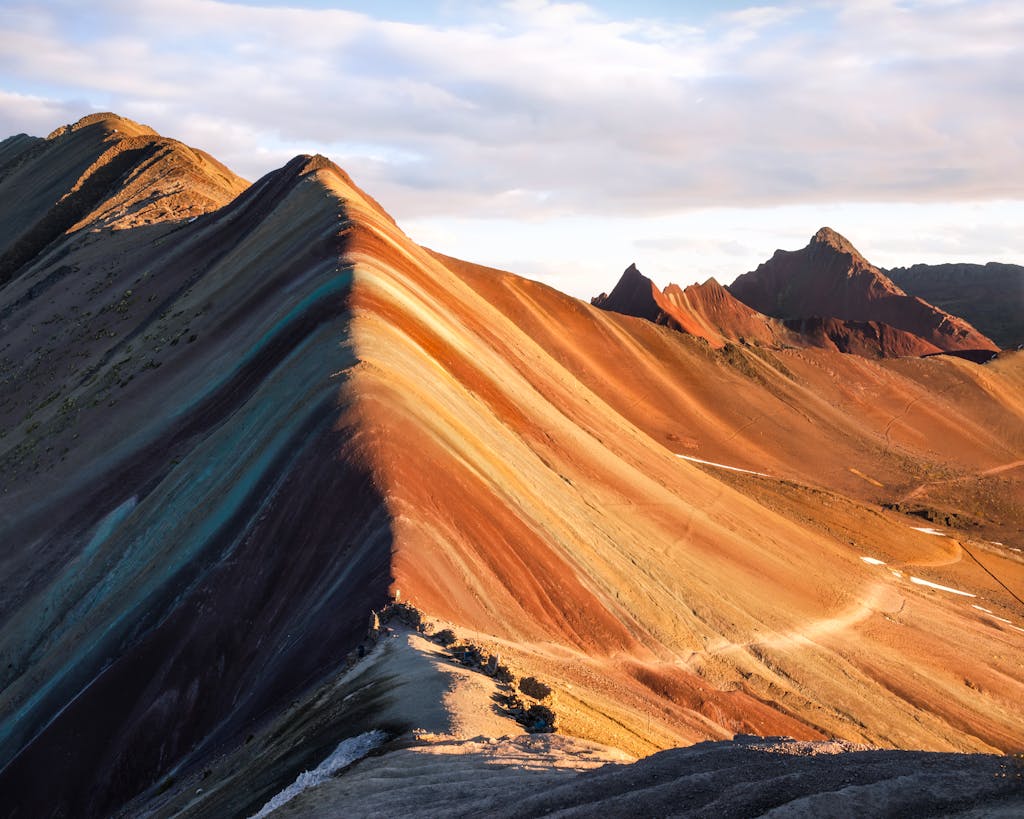
Health Precautions for Travelers
Taking proactive steps to protect your health can greatly enhance your travel experience in Peru. Here are essential health precautions to consider:
1. Vaccinations
Make sure you are up-to-date on routine vaccines such as hepatitis A, hepatitis B, typhoid, and yellow fever.
2. Water Safety
Avoid drinking tap water. Instead, opt for bottled or purified water to prevent waterborne illnesses.
3. Altitude Sickness
If you’re planning to visit high-altitude areas like Cusco or Machu Picchu, it’s important to acclimate gradually to reduce the risk of altitude sickness. Stay hydrated and consider medications if necessary.
Insurance for Travelers
Having comprehensive travel insurance is crucial when visiting Peru. It should cover:
- Medical Emergencies: Including hospital stays, emergency evacuation, and treatment costs.
- Trip Cancellations: Coverage for unforeseen cancellations due to illness or other emergencies.
- Adventure Activities: Make sure your coverage includes activities like trekking or rafting if you plan to participate in them.
Local Law Enforcement and Tourist Support Services
Understanding the role of local law enforcement and the availability of tourist support services can provide reassurance during your trip.
1. Local Law Enforcement Peru
The Policía Nacional del Perú (PNP) is responsible for maintaining public order in Peru. They have specific units dedicated to ensuring the safety of tourists.
2. Tourist Support Services
The iPerú offices located throughout major tourist destinations offer assistance with travel information, handling complaints, and providing help during emergencies.
Emergency Contacts
Having a list of emergency contacts easily accessible can make a significant difference in urgent situations:
- Emergency Numbers:
- Police (Policía Nacional): 105
- Ambulance (SAMU): 106
- Fire Department (Bomberos): 116
- Tourist Protection Hotline (iPerú): +51 1 5748000
By taking these health precautions and being prepared for emergencies, you can ensure a safer and more enjoyable journey through Peru.
The Importance of Having Travel Insurance for Peru
Traveling to Peru offers an array of unique experiences, from exploring ancient ruins to participating in traditional ayahuasca ceremonies. However, unexpected medical emergencies or accidents can quickly turn a dream vacation into a stressful ordeal. This is where comprehensive travel insurance becomes indispensable.
Covering Medical Expenses
While many visitors focus on personal safety measures, it’s crucial not to overlook health precautions. Medical care in Peru can be costly, and facilities in rural areas may lack the necessary resources for serious conditions. Travel medical insurance ensures that you are covered for:
- Hospital stays
- Emergency surgeries
- Prescription medications
- Specialist consultations
Having insurance means you won’t have to worry about the financial burden of unexpected medical costs, allowing you to focus on your recovery.
Emergency Evacuation Coverage
In extreme cases, you might require an emergency evacuation to a better-equipped hospital or even back home. This is especially pertinent for those planning physically demanding activities like trekking in the Andes or engaging in ayahuasca retreats. Emergency evacuation coverage can include:
- Air ambulance services
- Coordinated medical transport
- Repatriation of remains in case of death
Given the logistical challenges and high costs associated with emergency evacuations, this type of coverage can be life-saving.
Dealing with Ayahuasca Ceremonies Risks
Participating in ayahuasca ceremonies poses its own set of risks. Unregulated shamanic practices and inadequate medical screening can lead to severe physical reactions. If you’re considering such an experience, ensure your travel insurance covers:
- Medical treatment related to ayahuasca use
- Immediate access to local law enforcement Peru and tourist support services
- Coverage for any potential psychological aftercare
Selecting reputable retreat centers that prioritize health and safety is essential, but having travel insurance provides an additional layer of protection.
Additional Benefits
Comprehensive travel insurance often includes other valuable features:
- Trip cancellation/interruption coverage: Safeguards your investment if unforeseen events force you to cancel or cut short your trip.
- Lost baggage protection: Compensates for lost or stolen belongings, including important documents.
- 24/7 emergency assistance: Offers immediate help through dedicated hotlines, ensuring you have access to support whenever needed.
Emergency Contacts and Local Law Enforcement
Having insurance also means you’ll receive guidance on whom to contact during emergencies. Whether it’s connecting with local law enforcement in Peru or accessing tourist support services, being insured provides peace of mind knowing help is just a phone call away.
Ensuring you have travel medical insurance and emergency evacuation coverage when visiting Peru is not just a precaution; it’s a necessity. It allows you to explore confidently, knowing that you’re prepared for any unforeseen circumstances that could arise during your travels.
Role of Local Authorities and Support Systems for Tourists in Peru
Ensuring personal safety is paramount when traveling in Peru, but it’s equally important to take care of your health and be prepared for unforeseen emergencies.
Local Law Enforcement and Tourist Police
Tourists can seek assistance from local law enforcement agencies or dedicated support services, such as tourist police stations, in case of non-emergency situations or minor crimes. The tourist police are specially trained to handle issues faced by visitors and can provide quick assistance.
Key Points:
- Tourist Police Stations: These are located in major cities like Lima, Cusco, and Arequipa. They offer support in various languages and are better equipped to deal with tourist-specific concerns.
- Local Law Enforcement: Regular police stations can also assist tourists, especially in areas where there may not be a dedicated tourist police presence.
Important Emergency Contacts in Peru
Having a list of important emergency contacts at your fingertips is crucial during your stay. Below are some essential numbers and contacts:
- Emergency Services (Police, Fire, Ambulance): Dial 105
- Tourist Police: Lima – (01) 460 1060 / Cusco – (084) 246 022
- U.S. Embassy in Lima: (+51) 1 618-2000
- UK Embassy in Lima: (+51) 1 617 3000
- Australian Consulate in Lima: (+51) 1 630 0500
- Canadian Embassy in Lima: (+51) 1 319-3200
These contacts can provide immediate support and guidance during emergencies.
Health Precautions and Emergency Preparedness
Staying healthy during your trip involves taking certain precautions:
Key Recommendations:
- Vaccinations: Ensure you have the necessary vaccinations before traveling. Consult with a healthcare provider for advice tailored to your specific travel plans.
- Medication: Carry sufficient supplies of any prescribed medication since some may not be readily available locally.
- Travel Insurance: Comprehensive travel insurance is essential for covering potential medical expenses or emergency evacuation situations.
Ayahuasca Ceremonies Risks
Participating in ayahuasca ceremonies involves significant risks. These rituals, often conducted in rural settings, have health implications that should not be underestimated.
Precautionary Measures:
- Research Ayahuasca Retreats: Verify the reputation of the retreat you plan to visit. Look for reviews and recommendations.
- Discuss Health Conditions: Consult with a healthcare provider about any pre-existing conditions that might complicate the experience.
- Safe Use of Ayahuasca: Ensure that the retreat adheres to safe practices and has medical support on hand.
Taking these steps will help you navigate the complexities of participating in ayahuasca ceremonies safely.
By staying informed about local law enforcement resources and essential emergency contacts, as well as taking necessary health precautions, travelers can significantly enhance their safety and well-being while exploring Peru.

